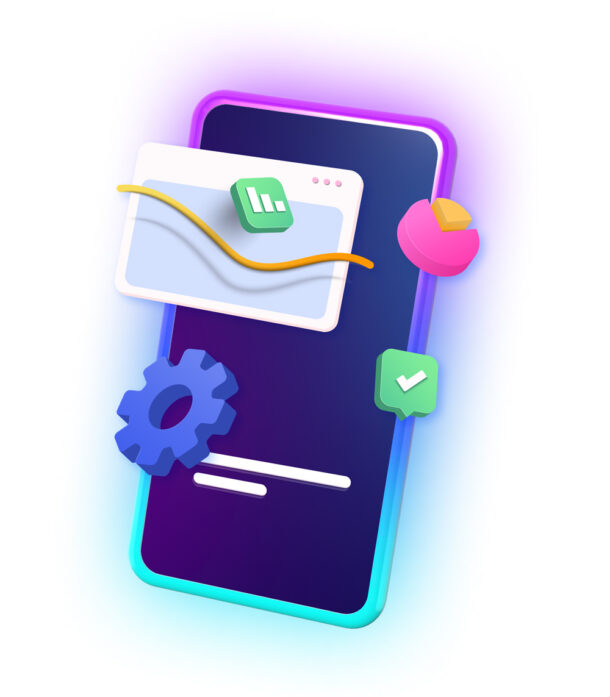When Apple introduced its privacy framework (ATT) in April 2021, this caused some serious turbulence in the mobile marketing ecosystem.
ATT is Apple’s user privacy framework that allows users to choose if they want to be tracked for advertising purposes, which is measured through ATT opt-in rates. Read the article to find out:
- What exactly are ATT opt-in rates?
- How high are they in 2024?
- How can you boost them?
What are ATT Opt-in Rates?
ATT opt-in rates tell us how many users consent to app tracking in exchange for a personalized ad experience.
The initial predictions for ATT opt-in rates were not very optimistic. Many believed that the majority of users would opt out of ad tracking. Others went a step further, claiming we can say goodbye to attribution on iOS.
With everything we know now, it’s safe to say that none of this came true.
The number of users who consent to ad tracking turned out to be much higher than anticipated. In fact, as time goes by, ATT opt-in rates keep increasing.
Let’s go over the numbers.
ATT Opt-in Rates: From 2021 to 2024
When ATT was first released at the end of April 2021, opt-in rates didn’t look promising. Even though they weren’t as low as the predicted 5%, in May 2021, they were at a pretty low level — 16% (Adjust).
Many feared it would stay this way.
However, soon enough, the numbers started rising.
By the end of 2021, the average opt-in rate climbed to 25% and continued to rise to 29% in 2022. In 2023, they increased even further, averaging at 34% (Adjust).
ATT Opt-in Rates by App Category
Opt-in rates significantly vary across app categories. According to the most recent data by Adjust, the top app categories by ATT opt-in rates are:
- Gaming (37%)
- Food & drink (36%)
- E-commerce (34%)
- Fintech (29%)
- Social (26%)
- Travel (25%)
- Entertainment (25%)
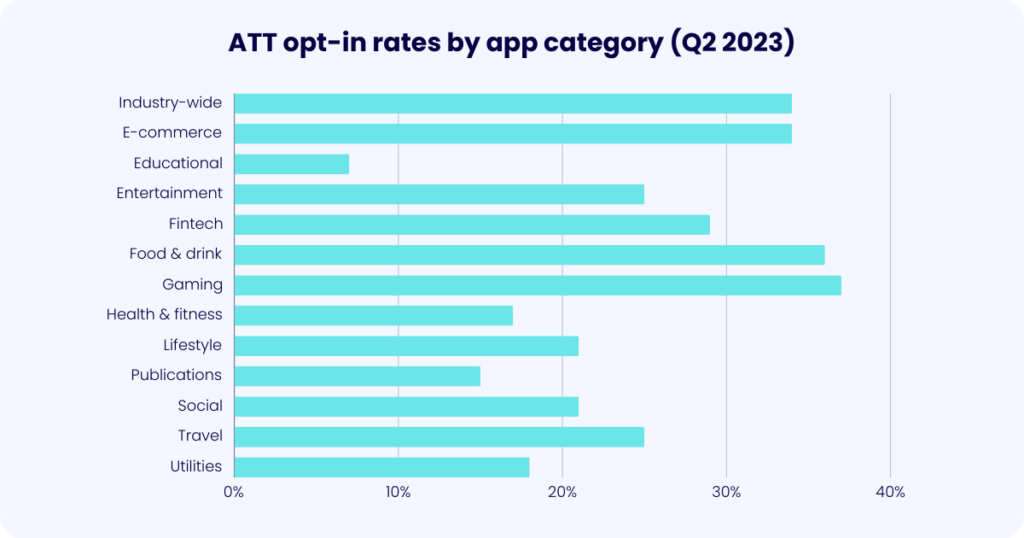
As you can see, gaming apps are the most successful in obtaining user consent. Food and drink apps are also above average, while e-commerce apps are in line with the overall average.
The category with the lowest ATT opt-in rates is education, averaging at only 7%. However, note that this is mainly due to numerous privacy regulations in obtaining data from minors, who often use education apps.
Opt-in Rates by Mobile Game Genre
The mobile game industry is very diverse. It ranges from super simple hyper-casual games to heavy graphics hardcore games.
And just like these games differ, so do their ATT opt-in rates. Let’s take a look at Adjust’s data for different game genres.
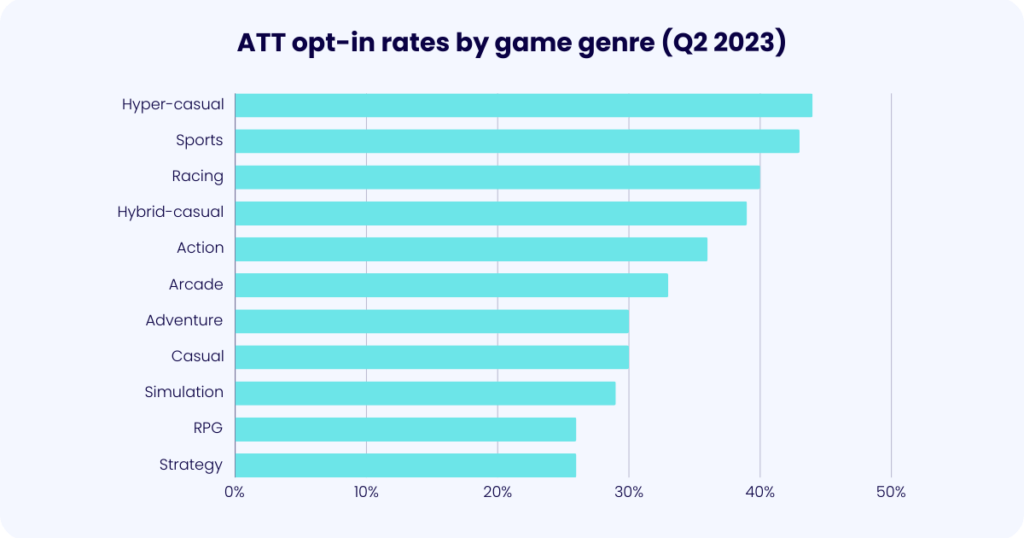
Hyper-casual games are the dominant genre by ATT opt-in rates, averaging at an impressive 44%. They are closely followed by sports games at 43%, racing games at 40%, and hybrid-casual games at 39%.
Why are hyper-casual games doing so well here?
There is no definitive answer to this.
Nonetheless, it makes sense that hyper-casual players don’t give prompts much thought. They want to play the game as quickly as possible, so they accept everything that comes their way to head to the playing part.
Meanwhile, mobile gaming genres with the lowest opt-in rates are family (2%), education (4%), and music (8%) games. Here, it’s important to note that, just like education apps, these games are affected by data regulations for minors.
Best Practices for Boosting ATT Opt-in Rates
There is a reason why the average ATT opt-in rates increased so much over the past few years – app developers have put a lot of effort into this.
Effort = testing.
To find out how to get the most out of ATT, developers have tested different strategies. Based on that, they’ve discovered some best practices that work well for their apps.
All of these strategies have the same goal — giving users compelling reasons to consent to ad tracking. Besides that, the developers need to assure users that their data will be treated carefully.
In other words, it’s about gaining trust.
Here are some of the most effective strategies you can use to boost your app’s ATT opt-in rates and make your users trust you.
1. Customize Your ATT Prompt
Apple’s ATT prompts consist of two parts. The first one is set in concrete, but you do have the option to customize the second part — the purpose string.
If you’re ignoring this option, you’re making a big mistake.
Customizing the purpose string is your chance to motivate users to opt in. You can use it to chase away any users’ privacy concerns they may have and highlight what are the benefits for them.
Some of the benefits you can highlight in the purpose string are:
- a personalized ad experience
- relevant ads
- advanced social features
- better fraud prevention
Now, your goal is to tell all this to your users… but without sounding like a robot.
For this reason, we advise you to avoid using words like “collect”, “track”, “installation” and “services”. All of these can have negative connotations, as users can perceive them as threatening and scary.
Instead, you can make things warmer and more user-focused by using phrases like “your data”, “personalized ads” and “only used”.
According to Kochava’s research, shorter prompts of up to 12 words work better than longer ones. Therefore, you should try to make the benefits clear in a short text, and prioritize those that are most likely to work for your audience.
ATT Prompt Example: Coin Master
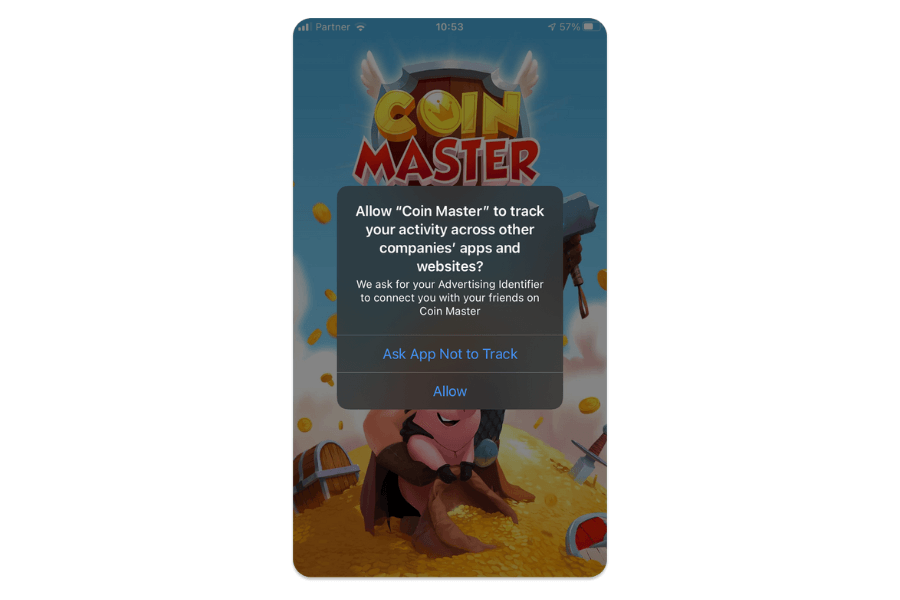
The developers of Coin Master didn’t miss out on the opportunity to customize the game’s prompt and boost its ATT opt-in rates.
As you may notice, this prompt doesn’t contain any of the recommended words we mentioned before, and it consists of 15 words. It doesn’t feature any of the words to avoid either.
It may not be “by the book”, but this prompt makes perfect sense for this game.
The thing is, Coin Master is a game with strong social features. PvP play is at the heart of the game, and players frequently battle their social media buddies. For this reason, the prompt asks players to share their advertising ID to connect with their friends in the game.
Not So-Good ATT Prompt Example: AccuWeather
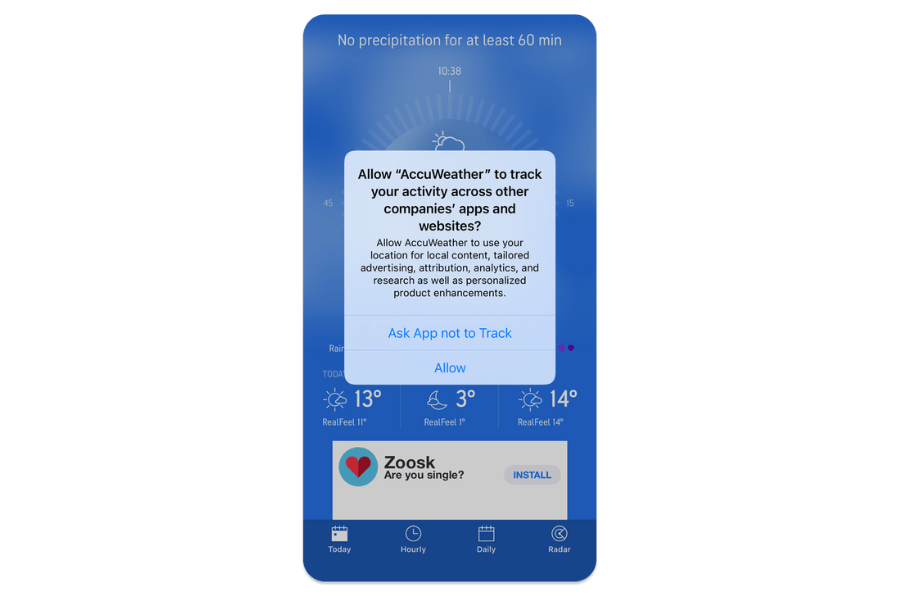
This weather app could have a better ATT prompt.
Besides the fact that it’s pretty long (20 words), the prompt uses a lot of words that are difficult to comprehend. This includes words like “attribution”, “analytics”, “research” and “product enhancements”.
The problem?
Sure, app & game professionals can understand exactly what all of this means. However, the average user probably won’t.
Besides complicated wording, this ATT prompt revolves around the benefits for the developer. However, it fails to provide an answer to a very important question – what’s in it for the user?
2. Use Pre-prompts
Frustrated by the fact that you can’t fully customize the ATT prompt? No problem, you can display your custom-build pre-prompt.
A pre-prompt is a pop-up you can display to users right before the iOS pop-up appears. Unlike that one, this prompt is entirely yours. This means you can take care of its:
- Layout
- Messaging
- Timing
- What happens next
Use all this freedom to make the pre-prompt look and feel like your app. Ultimately, it should help you build trust, educate, motivate users, and boost ATT opt-in rates.
Here, there are no “one size fits all” rules.
Each app looks and feels different, so different prompts can work well for different apps. In the example below, you will see two completely different pre-prompts from the same app category.
Pre-prompt Examples: Adidas vs. Nike

Adidas’ pre-prompt is centered around its visuals. It features two athletes high-fiving, referring to teamwork, and inviting users to “join the team”. The text below highlights the benefits for the users and gives clear instructions on what they should do when they see the prompt.
On the other hand, Nike’s pre-prompt is a short, clear text that emphasizes the advantages of opting in. It appears at the end of user onboarding, giving users time to establish a connection with the app.
Both of these prompts prepare users for the next step – the actual ATT prompt. Adidas does with a “continue” button, while Nike uses “next”.
3. Watch Out for Timing
Mastering the message of the ATT prompt is only a part of the job. Another important part is its timing.
So, is there an ideal moment to ask users for consent?
Again, no such thing as ideal here. Each app is unique, and so is the way users interact with it.
The critical first step to determining ideal timing is understanding your users’ journeys. You should know exactly how the typical user moves through the funnel and experiences the app.
Based on that, you can decide when to pop the question.
For example, for an e-commerce app, it’s a good idea to delay the prompt until users start viewing products. On the other hand, subscription-based apps may benefit from displaying the prompt right after users sign up.
When it comes to gaming apps, a recent study suggests that the best time to deliver the notification is the first 30 seconds. According to GameRefinery, 72% of top-grossing iOS games are leveraging this practice.
All in all, the right time is the point at which users become aware of your app’s value, making them more likely to opt in.
4. Cross-Promote
With the introduction of ATT, we’ve seen a rise in cross-promotion, a long-standing marketing practice.
To define, cross-promotion is a strategy where developers promote their apps within other titles in their portfolio.
How does it affect ATT opt-in rates?
Very well, according to Adjust’s recent research that has shown that users are more likely to opt in when directed to another app by the same company.
For cross-promoted apps, ATT opt-in rates reached 52.84%, much higher than the ad network average of 27.35%.

Just like ATT opt-ins in general, cross-promotion opt-ins were particularly good for hyper-casual games, where they hit an impressive 59% (Adjust).
Cross-promotion usually works best for app developers with large portfolios because it allows them to leverage big existing user bases. Therefore, if you have a solid-sized user base and you’re struggling with low opt-in rates, it might be a good idea to try it out.
Bonus Tip: Place Ads on O&O Properties
If you’re advertising on iOS, it’s good to hear that ATT opt-in rates are increasing, allowing you to get more data on users.
But is there a way to get data on all acquired users?
You can achieve this by placing your ads on O&O (owned and operated) properties. The difference between these properties and most ad networks is that, instead of 3rd party data, they leverage 1st party data for ad targeting.
With this strategy, you can reach quality target audiences and stay compliant with Apple’s (and Google’s future) restrictions.
Interested? Reach out to MAF and let’s craft a custom advertising strategy for you!







